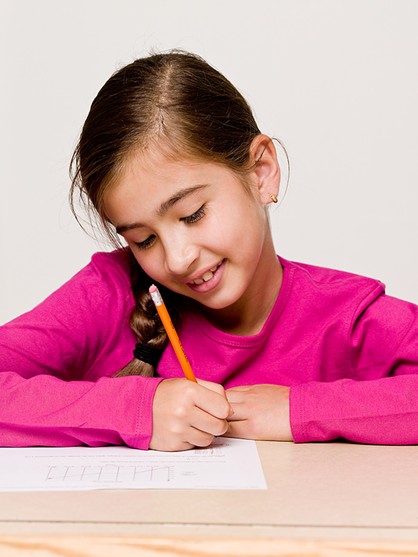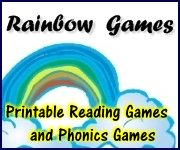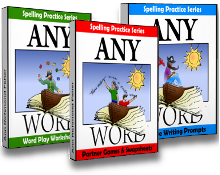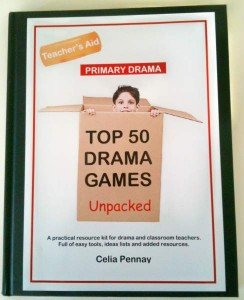Writing a Personal Narrative in Three Easy Lessons!
Writing a personal narrative introduces your students to the magic of storytelling. Here are three easy, enjoyable lessons that guide your students in creating personal narrative stories. Spread these activities over three days to get the maximum benefit. First, you'll help your class brainstorm and group ideas, then you'll lead them in considering descriptive language, and lastly, you'll assist your students in using an outline for writing a first-person narrative piece.Let's get started!
Lesson 1: In the Mind's Eye
- Step 1: As a class, brainstorm common experiences. Some examples might be entering kindergarten or first grade, celebrating a birthday of favorite holiday, caring for a pet, or playing on a sports team. List as many general experiences as possible, and then ask students to mentally select an experience from the list.
- Step 2: Now have your students write down as much as possible about their selected experiences. Set a timer for ten minutes. Tell them not to think too hard, but to simply jot down whatever comes to mind as they consider their chosen experiences. The goal is not to generate correct English sentences at this stage. The goal is just to get thoughts and ideas on paper.
- Step 3: Next, ask your students to illustrate the experiences on paper, using crayons, colored pencils, or markers. Encourage kids to include as many specific details as possible.
- Step 4: End this lesson with a discussion. Ask students to plan how they'll share their experiences. Can the events be broken down into main ideas? How should the narratives begin? How should they end? How much information is necessary to make a point?

Lesson 2: Details! Details! Details!
- Step 1: Read the following aloud: I went home. I ate a snack. I did my homework. I played outside.
- Step 2: Now read the following aloud:I stumbled off the bus, arms full of books, dragging my jacket in the dust of the driveway. What a day it had been! Throwing everything on the sofa, I spied Mom's homemade chocolate fudge brownies cooling on the kitchen counter. Just the thing! Chocolate and a big glass of milk before tackling my homework! I savored every bite and then whizzed through my math problems. Double-checking those multiplication drills, I found no mistakes. Milk and brownies: the perfect brain food! Tucking away my books, I ran outdoors to join the neighborhood ball game.
- Step 3: With your class, discuss the differences in the two writing samples. How is each passage different? Why do details make writing better? What do details help a reader do? Emphasize the importance of using vivid details so that the reader can picture what is taking place.
- Step 4: Now divide students into groups of three. Assign the same general topic to the whole class. Examples might be the last day of school, learning to ride a bike, or a holiday party. Have each group write together, creating a detailed paragraph describing the experience. When finished, read the paragraphs aloud. The group using the best detailed language is the winner!

Over the past two days, your students have brainstormed lists of thoughts and ideas for personal narratives, created illustrations to match, and practiced using detailed language in a friendly competition. Tomorrow, they'll put everything together in writing a personal narrative.
Lesson 3: Writing a Personal Narrative Using an Outline
- Step 1: As an instructor, model writing a personal narrative using the following question outline:
- Event:
- Where did the event take place?
- Who was with you?
- What happened? Describe it in detail.
- What happened that was exciting, scary, funny, or interesting?
- How did the experience end?
- How did you feel at the end?
Think aloud as you write on the board or overhead projector. Encourage students to participate, helping you with detailed language or clarification of information. Explain to the class that they have just assisted you in writing a personal narrative.
- Step 2: Now, using the same question outline above, have your students complete their own narratives. Use the idea lists and work from the previous two days. Remind your class, that in writing a personal narrative, to remember the following:
- use the first-person point of view
- use chronological organization
- share the significance of events
- share thoughts and feelings
- describe the setting
- describe the people involved
- Step 3: Edit and revise the narratives with your students, or have the kids read their work aloud to partners, listening for and suggesting any changes.
- Step 4: Enjoy an afternoon of read-alouds! Writing a personal narrative puts kids in touch with themselves and each other!
- Helpful Hint: the above lesson plans work well with writing memoir.
Return from Writing a Personal Narrative to Creative Writing Lesson Plans
Return from Writing a Personal Narrative to Creative Writing Ideas and Activities
Helping You Write Across the Curriculum!
copyright 2009-2013 www.creative-writing-ideas-and-activities.com
Our Most Popular Pages
5. Writing a Personal Narritive
10. Elements of Persuasive Writing
Recommeded Resources:
AnyWord(TM) Spelling Practice Series!
Worksheets, games and activities to use with any spelling words. Three volumes in all!
Stop Essay Pain!
LitWorks.com
Resources to help students prepare for literature examinations.
Teach Kids Drama!








